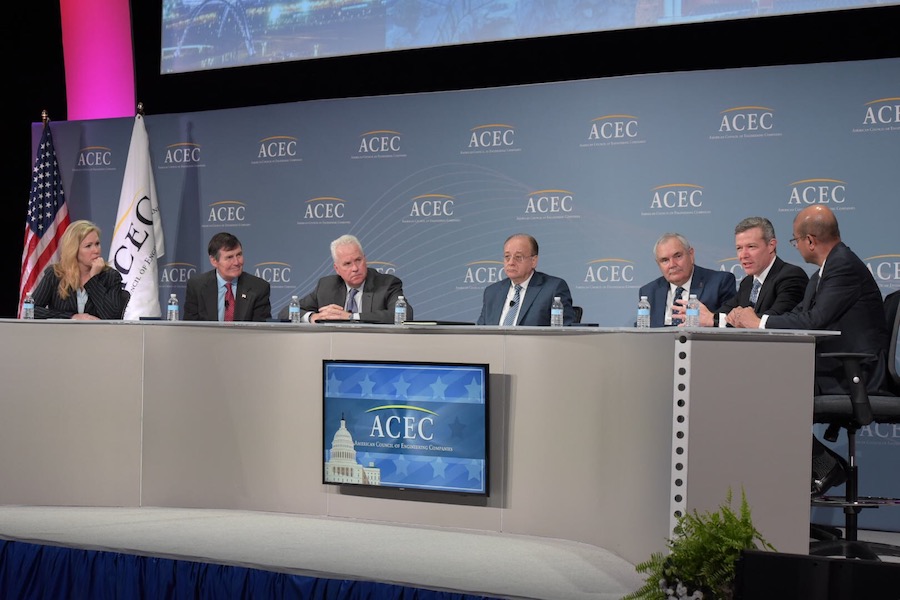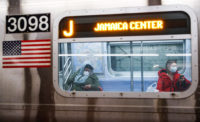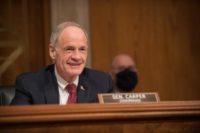A funding plan for a $2 trillion infrastructure package recently discussed by President Trump and Democratic congressional leaders has yet to emerge, but a panel of industry trade group CEOs sees at least some hope of achieving a strategy palatable to both parties.
Hosted by the American Council of Engineering Companies, the panel agreed that the biggest obstacle to an agreement remains the federal fuel tax, last changed in 1993.
AASHTO executive director Jim Tymon noted that recent state-level fuel tax increases suggest the politics of such proposals no longer fall strictly along partisan lines.
“It hasn’t cost them their seats,” Tymon said of state legislators who have voted for such measures.
Mike Toohey, president & CEO of the Waterways Council, was more skeptical about Congress making such a move on its own, however. Absent a White House endorsement, Toohey said, “there is no incentive in a non-earmark environment” to increase the fuel tax.
Another potential stumbling block is confusion over the role of alternative revenue-generating strategies such as vehicle miles traveled. Associated General Contractors CEO Stephen Sandherr said VMT “is discussed as a supplement to the gas tax,” rather than an eventual full replacement, which, he added, would cover “non-contributors” such as owners of electric vehicles.
Also to be determined is whether an infrastructure plan heavy on traditional road and bridge construction can compete or even co-exist with the proposed “Green New Deal,” which stresses a shift toward cleaner transportation technologies.
Sandherr said it remains to be see whether proponents of the latter will accept streamlined review and permit processes for infrastructure projects. The panelists also agreed that the industry as a whole needs to do better job of communicating how infrastructure projects contribute to environmental quality.
“Investing in infrastructure is green,” observed Thomas Kuhn, president of the Edison Electric Institute, who also noted that increasing sustainability of the nation’s energy infrastructure is being challenged by the need to safeguard systems against cyberthreats. He added that a tie-in with technology will help spur public interest in infrastructure issues.
While these and other potentially contentious issues might raise the possibility yet another drawn-out debate and even deadlock, several panelists didn’t rule out the potential for a quick compromise, particularly if the current Congress has few other accomplishments to offer voters prior to the 2020 elections.
“Congress has a knack of turning on a dime and doing something fast when it wants to,” advised Paul Skoutelas, president & CEO of the American Public Transportation Association. “Don’t ever think nothing will ever happen.”
Tymon agreed, adding, “It may not be $2 trillion, but a bill very possible.”
In discussing other industry challenges, the ACEC panel agreed that creativity is essential to address the ever-growing of labor shortage. Tymon cited a new Utah DOT partnership with community colleges to create a highway maintenance degree program. As automated and connected vehicles and other emerging technologies should also be stressed “to show how it fits with infrastructure.”
Technology in the form of on-demand ride-hailing and ride-sharing services is “a wake-up call” to the transit industry, Skoutelas said, adding that agencies are having to take a hard look at their role going forward, “both providing services and linking their systems to a broader array of services.”





_ENRreadyCover.jpg?height=200&t=1646347837&width=200)


